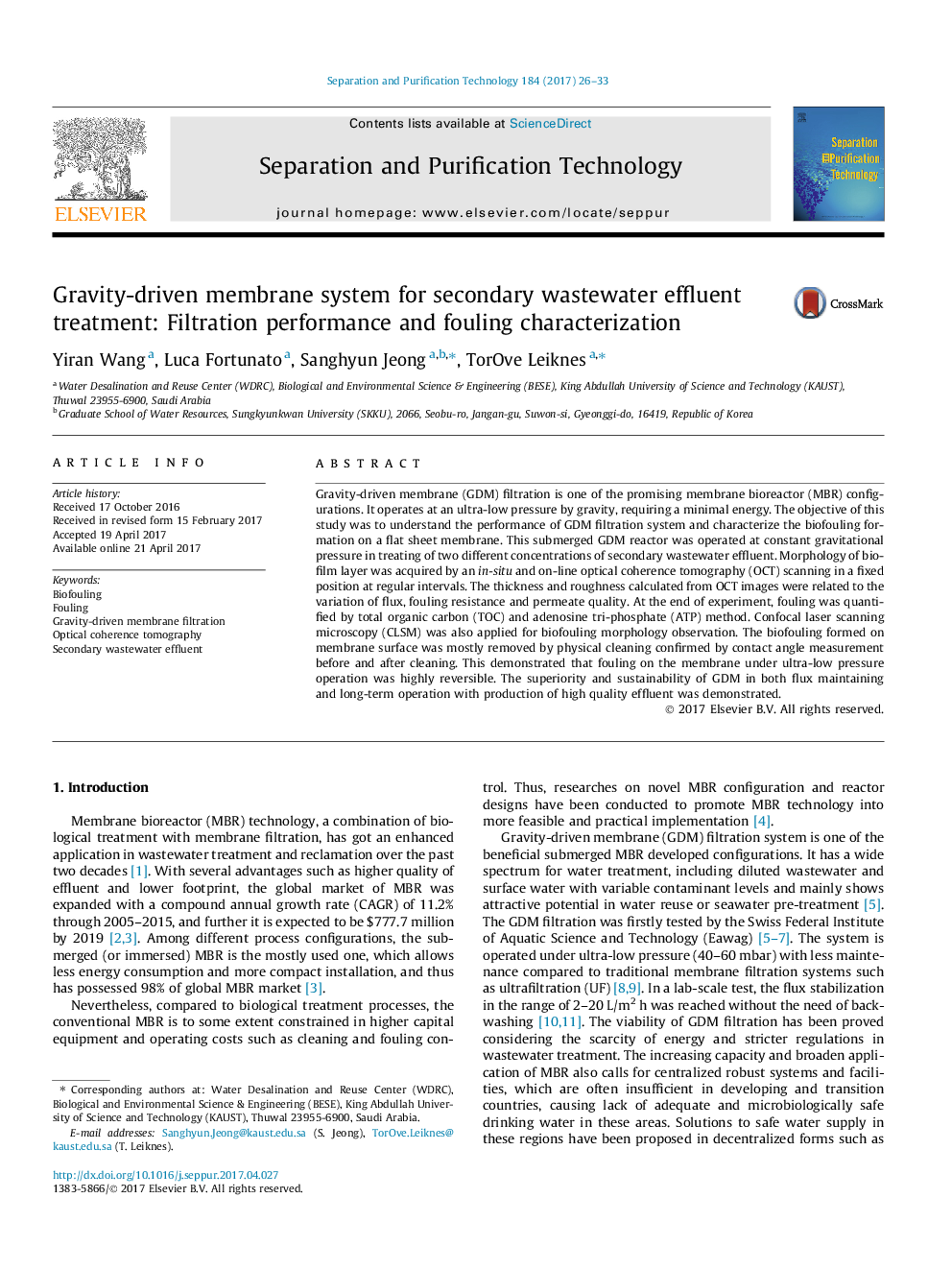| Article ID | Journal | Published Year | Pages | File Type |
|---|---|---|---|---|
| 4989731 | Separation and Purification Technology | 2017 | 8 Pages |
Abstract
Gravity-driven membrane (GDM) filtration is one of the promising membrane bioreactor (MBR) configurations. It operates at an ultra-low pressure by gravity, requiring a minimal energy. The objective of this study was to understand the performance of GDM filtration system and characterize the biofouling formation on a flat sheet membrane. This submerged GDM reactor was operated at constant gravitational pressure in treating of two different concentrations of secondary wastewater effluent. Morphology of biofilm layer was acquired by an in-situ and on-line optical coherence tomography (OCT) scanning in a fixed position at regular intervals. The thickness and roughness calculated from OCT images were related to the variation of flux, fouling resistance and permeate quality. At the end of experiment, fouling was quantified by total organic carbon (TOC) and adenosine tri-phosphate (ATP) method. Confocal laser scanning microscopy (CLSM) was also applied for biofouling morphology observation. The biofouling formed on membrane surface was mostly removed by physical cleaning confirmed by contact angle measurement before and after cleaning. This demonstrated that fouling on the membrane under ultra-low pressure operation was highly reversible. The superiority and sustainability of GDM in both flux maintaining and long-term operation with production of high quality effluent was demonstrated.
Related Topics
Physical Sciences and Engineering
Chemical Engineering
Filtration and Separation
Authors
Yiran Wang, Luca Fortunato, Sanghyun Jeong, TorOve Leiknes,
